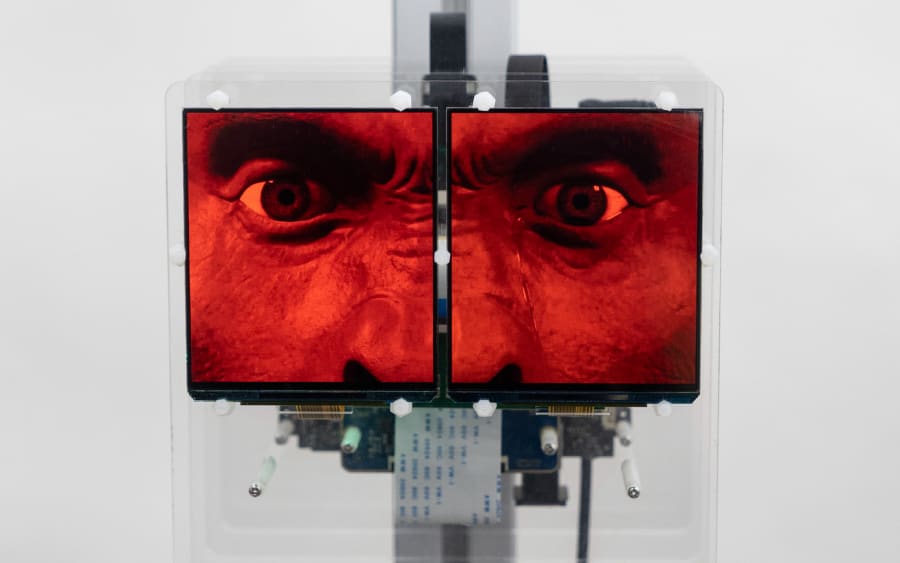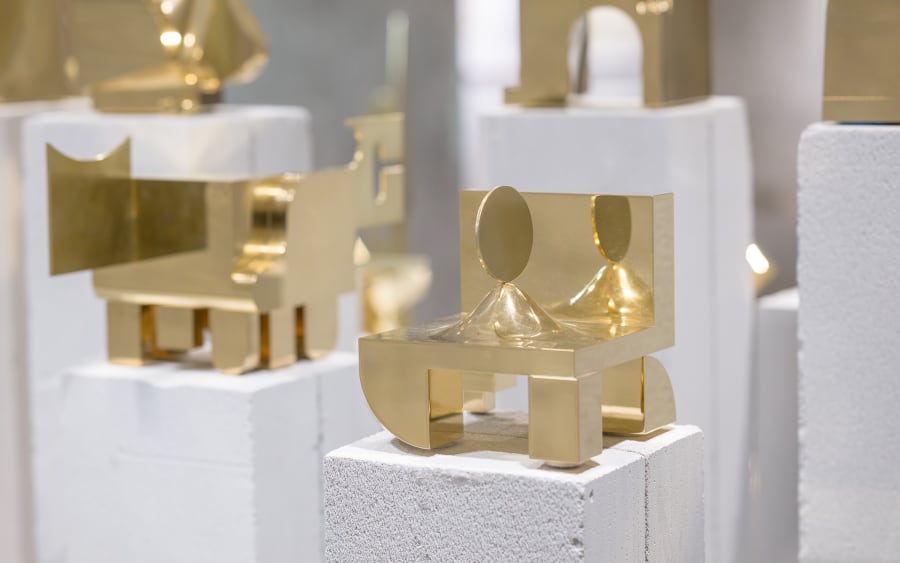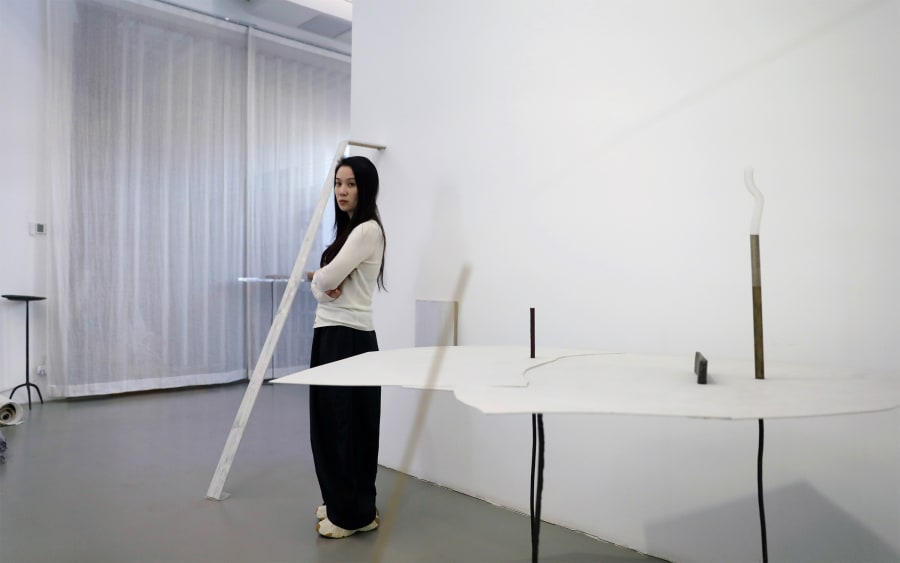For Su Yu-Xin, pigment is more than just color. The Taiwanese-born painter makes her own pigments from natural materials – stones, shells, minerals, flora, and fauna – through which she traces histories of colonialism and migration, of geology and tectonics. The narratives behind the colors in her landscape paintings, depicting bucolic beaches or volatile volcanoes, are as multilayered as the hues themselves.
At Taipei National University of the Arts, Su studied traditional Chinese ink wash painting and Japanese Nihonga painting, an education which involved the daily preparation of her medium. ‘It’s like a ritual. You go into the studio, take off your shoes, and cook your ink and gel fresh every single day,’ she tells me when we meet at her spacious studio in downtown Los Angeles, where she moved two years ago.
Su settled in London in 2014 to attend the MFA program at the Slade School of Fine Art. Working with pre-made European oil paints, she had a dismaying realization: only a handful of companies manufacture the colors most artists use. ‘That’s actually horrifying,’ she tells me, ‘because basically they are deciding what shows up in art history. Then I thought, “What if I try to make my own?”’ Su did just that, and now one corner of her studio houses a modest lab where she mixes raw materials into pigments. Black tourmaline, red agate, organ pipe coral, lapis lazuli, volcanic rock, cowrie shells, cochineal, sulfur, and copper are stored in neatly labeled jars. Su often complicates the beauty of her images by using materials that reflect histories of imperial exploitation and environmental despoliation. As a precedent, she cites J.M.W. Turner’s sublime sunrises from the early 19th century, created with ‘Indian Yellow’ – a pigment made from the urine of cows fed only mangoes and brought to the UK through colonial networks.
The artist’s current solo show at Orange County Museum of Art, ‘Searching the Sky for Gold’, features scenes from her travels around the Pacific Rim: railroads in Taiwan, Japanese hot springs, the Central California Coast, and volcanic eruptions throughout the region. ‘It’s a geological space, but it’s also a cultural space,’ she notes. The show’s visual through line consists of various manifestations of atmosphere – clouds, smoke, mist, and fog – rendered with a voluptuous dynamism that recalls ethereal Chinese landscapes, Baroque sensuality, and Thomas Hart Benton’s undulating topography.
In some paintings, Su selects pigments for their proximity to the subject matter, as with Dust Crown (Mount St. Helens) (2024), which features helenite, a green, manmade glass created by melting volcanic ash from the eruption of Mount St. Helens in Washington in 1980. She ground this substance back to powder, then mixed it into paint, adding another chapter to its life cycle. Overall, however, Su favors heterogeneous material combinations. ‘If the pigments are from one location, you end up with a really boring result,’ she explains. ‘As with Turner, there should be a tension between the material and the image. In this way, you create an image that can only exist in painting.’
Su Yu-Xin is represented by MadeIn Gallery (Shanghai) and collaborates with Perrotin (Paris, Hong Kong, Los Angeles, New York, Seoul, Shanghai, Tokyo), and Albion Jeune (London).
‘Su Yu-Xin: Searching the Sky for Gold’ runs at Orange County Museum of Art, Los Angeles, until May 25, 2025.
Matt Stromberg is a freelance visual arts writer based in Los Angeles.
Top image: Courtesy of the artist.
Published on February 3, 2025.


